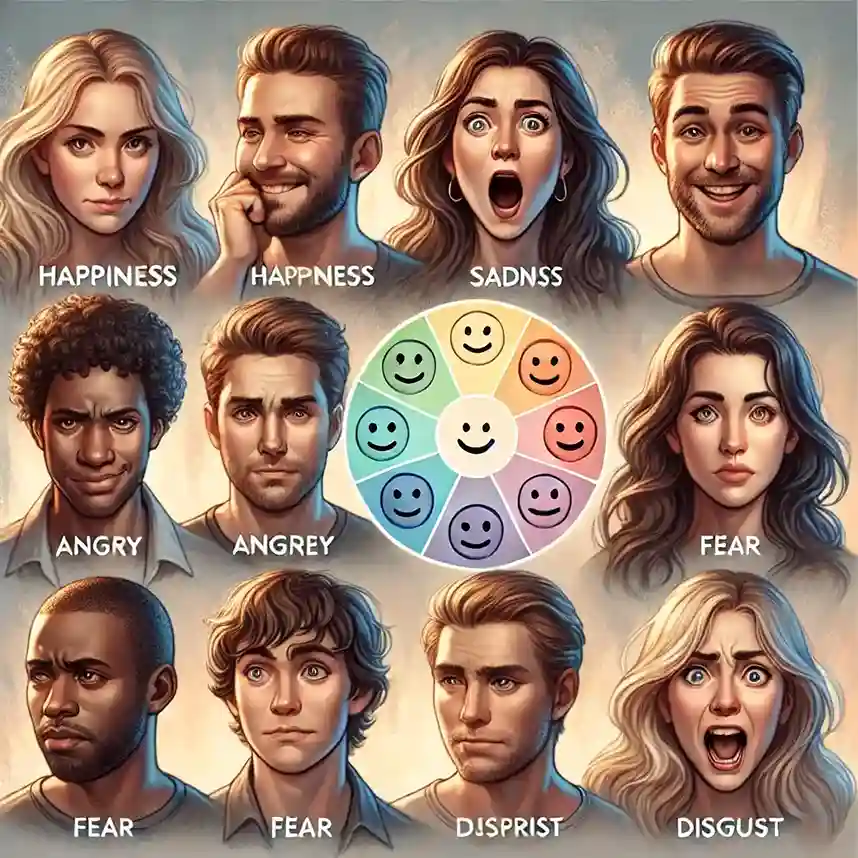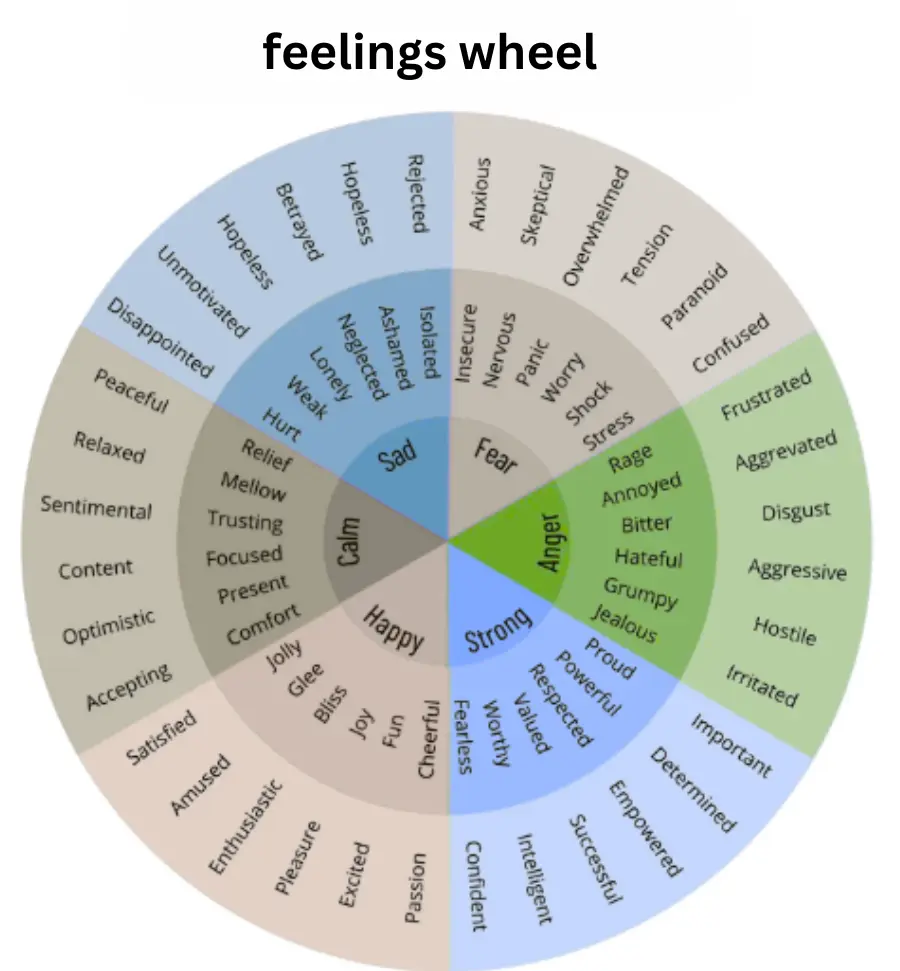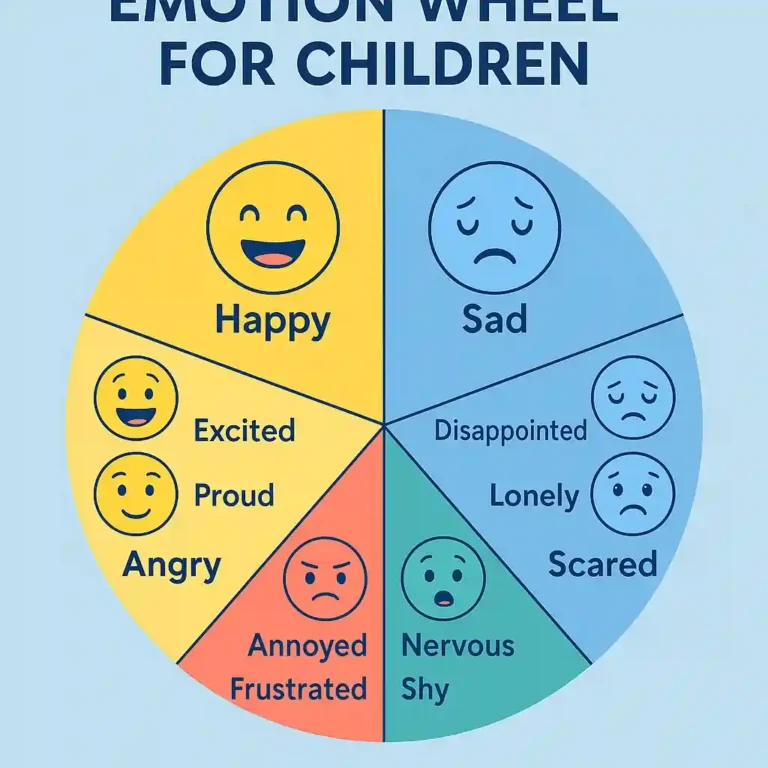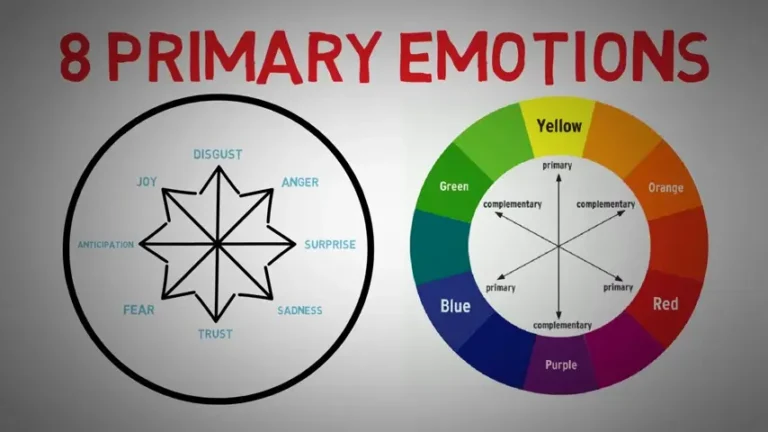The Feelings Wheel: Understanding and Using It for Emotional Awareness

What is the Feelings Wheel?
The feelings wheel, also known as the emotions wheel or the wheel of emotions, is a powerful tool designed to help individuals identify, understand, and express their emotions more accurately. Developed by psychologist Dr. Robert Plutchik and later adapted by various experts, the emotion circle provides a structured way to explore different emotions and their intensities.
The wheel of emotions is particularly useful for those who struggle to articulate their feelings, whether in therapy, relationships, or personal reflection. By using the emotions color wheel, people can gain better emotional awareness, leading to improved communication and mental well-being.
The Structure of the Feelings Wheel
The feelings wheel is often divided into different layers that range from broad emotional categories to more specific feelings. These layers help individuals pinpoint their emotions more precisely.

Primary Emotions
At the center of the wheel of emotions chart, there are a few core emotions that serve as the foundation for all others. These typically include:
- Joy
- Sadness
- Anger
- Fear
- Disgust
- Surprise
Secondary and Tertiary Emotions
Moving outward on the wheel of feelings, each primary emotion branches into secondary and tertiary emotions that further refine emotional experiences. For example:
- Joy may expand into feelings like happiness, contentment, or excitement.
- Sadness can develop into grief, disappointment, or loneliness.
- Anger may lead to frustration, resentment, or hostility.
This structure allows for a nuanced exploration of emotions and provides insight into how different emotions are interconnected.
Why the Feelings Wheel is Important
The emotion and feeling wheel is a valuable tool for emotional intelligence. By recognizing and labeling emotions accurately, individuals can:
- Enhance Self-Awareness: Understanding emotions helps in identifying triggers and emotional patterns.
- Improve Communication: Expressing emotions clearly fosters better relationships.
- Regulate Emotions: Managing intense feelings becomes easier when they are understood.
- Develop Empathy: Recognizing emotions in others leads to stronger social connections.
How to Use the Feelings Wheel
Many people wonder, how to use the feelings wheel effectively. Here are some practical ways to incorporate the wheel of emotions into daily life:
Journaling with the Emotion Circle
Writing down feelings daily while referring to the feel wheel can help identify emotional patterns and triggers. This practice promotes self-awareness and emotional growth.
Therapy and Counseling
Many therapists use the feelings circle to help clients articulate and process emotions. By pointing to specific sections of the wheel, individuals can better describe their emotional state.
Conflict Resolution
In relationships, the wheel of emotion helps in expressing emotions constructively rather than reactively. This reduces misunderstandings and strengthens emotional bonds.
Mindfulness and Meditation
Practicing mindfulness with the emotion sensation wheel encourages individuals to observe their emotions without judgment. This can lead to greater emotional balance and calm feelings.
The Connection Between the Feelings Wheel and Mental Health
Understanding emotions through the feeling circle can positively impact mental health by reducing stress, anxiety, and depression. Recognizing emotions helps in addressing negative thought patterns and developing coping strategies.
The Color Wheel of Emotions
The color wheel of emotions visually represents emotions through different colors, making it easier to identify and differentiate between feelings. For example:
- Warm colors (yellow, orange, red): Represent energetic emotions like joy and anger.
- Cool colors (blue, green, purple): Indicate calming or sad emotions like tranquility and sorrow.
This visual aid enhances emotional recognition, especially for those who find it challenging to articulate feelings.
FAQs About the Feelings Wheel
What is the difference between the emotions wheel and the mood wheel?
The emotions wheel focuses on identifying specific emotions, while the mood wheel categorizes broader emotional states that last longer, such as overall happiness or melancholy.
How can I use the feelings wheel in daily life?
The feeling wheels can be used in journaling, therapy, self-reflection, and communication to enhance emotional awareness and expression.
Are all feelings included in the wheel of emotions?
While the wheel of emotions covers a wide range of feelings, human emotions are complex and can extend beyond what is represented in the circle of emotions.
Can children use the emotion circle?
Yes! The feelings wheel is an excellent tool for teaching children about emotions and helping them develop emotional intelligence from a young age.
Where can I find a printable wheel of emotions chart?
Many psychology websites offer free printable versions of the emotions color wheel that can be used for personal or professional use.
Conclusion
The feelings wheel is an invaluable tool for improving emotional intelligence, communication, and mental well-being. Whether you’re using it for personal growth, therapy, or relationships, understanding your emotions through the wheel of emotions chart can lead to a more fulfilling life.



